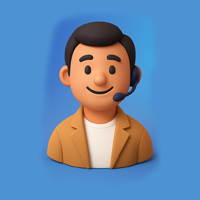
Let’s talk about a common, expensive headache. You pour money into LinkedIn Ads. The clicks trickle in. But the conversations you really want, the ones with serious, ready-to-buy decision-makers, somehow never materialize. Sound familiar?
The problem isn’t that LinkedIn doesn’t work. It’s that many campaigns are built to attract clicks, not to attract commitment. There’s a world of difference between someone who’s mildly curious and someone who is actively searching for your solution right now. These are your high-intent leads. They have a problem, a budget, and a deadline. Your job is to find them and talk to them like the professionals they are.
This isn’t about complicated jargon. It’s about a smarter, more thoughtful approach. We’ll walk through how to shift your strategy from casting a wide net to spearfishing the exact right fish. And for when that precision feels overwhelming, that’s where expert LinkedIn ads lead gen services come into play, handling the heavy lifting for you.
First, Get Inside Their Head “The High-Intent Mindset”
Before you touch the ad builder, you need to think like your ideal customer. Forget what you’re selling for a moment. What are they buying? What does their average Tuesday look like, and what’s causing them stress on it?
A high-intent lead isn’t just a job title. They’re a person under pressure. Maybe the Head of Sales is missing their quota because lead quality is poor. Perhaps the CTO is losing sleep over a security vulnerability. Your ad needs to show them you understand that specific pressure.
Generic messages get generic results. “We’re the leading platform in X” is wallpaper. It blends into everything else. But a message that says, “Tired of unqualified leads draining your sales team’s time?” That stops the scroll. It resonates because it speaks to a real, daily frustration. This is the foundation. Everything else builds on this empathy.
Step 1: Targeting That Feels Like a Secret Weapon
LinkedIn’s true power is in its targeting. But using it well is like being a master chef—it’s about combining ingredients, not just using one.
The mistake? Targeting just a job title. “Director of Marketing” could be in any industry, at any size company, with a thousand different priorities.
The solution? Layering. Think of it as creating a detailed portrait.
- Start with the Obvious: Job Title = “VP of Engineering”
- Add Industry Context: Industry = “Information Technology & Services”
- Filter for Size: Company Size = “201-500 employees” (Companies this size have budget but are often agile enough to make decisions).
- Dig Deeper: Skills = “AWS, Kubernetes, Docker” (This tells you what tech they’re actually using).
- The Goldmine: Groups = “Cloud Security Professionals” (This signals active interest in your domain).
See the difference? You’re no longer targeting a title. You’re targeting a specific person with specific, relevant problems. This is how you find intent. A professional LinkedIn ads lead gen services provider lives and breathes this kind of detailed audience building.
Step 2: Writing Ad Copy That Sounds Human
Your ad copy has seconds to make an impression. It needs to feel like a smart colleague cutting to the chase.
Forget the corporate buzzwords. Here’s a simple framework:
Headline:
Name the enemy. What is the single biggest pain point?
- Weak: “Streamline Operations”
- Strong: “Stop Wasting 20 Hours a Month on Manual Reporting.”
Body Text:
Agitate, then hint at the solution.
- Weak: “Our solution offers best-in-class automation.”
- Strong: “Those manual reports are a drain on productivity. What if your team could focus on analysis instead of data entry? Our guide shows you how.”
Call-to-Action (CTA):
Be direct. “Learn More” is weak. It invites window-shoppers. “Download the Guide” or “Request a Demo” asks for a small but meaningful commitment. This filters for higher intent.
The tone should be confident and helpful, not salesy. You’re a problem-solver, not a pitchman.
Does this feel like a lot to manage? You’re not alone. The Creative Unit (TCU) specializes in turning LinkedIn into a predictable source of high-quality leads. If you are looking for expert LinkedIn ads lead gen services, contact TCU. Let’s build a campaign that actually works.
Step 3: Picking the Right Tool for the Job (Ad Formats)
Not all ad formats are created equal. You need to match the format to where your prospect is in their journey.
Sponsored Content:
Great for top-of-funnel. Use a video or a clear image to build awareness. The goal here is education, not a hard sell.
Lead Gen Forms:
This is your high-intent powerhouse. When someone clicks, their LinkedIn profile data automatically populates a form to download a white paper, guide, or sign up for a demo. It’s a one-click action. This drastically reduces friction and is perfect for capturing someone who is genuinely interested.
Message Ads:
Use these carefully. Sending a direct message to someone’s inbox can be highly effective for inviting them to a webinar or a personal consultation. But it can also feel spammy if your targeting is off. Reserve this for your most valuable, highly-targeted audiences.
Think in sequences. Maybe a Sponsored Content video introduces a problem. Then, you use a Lead Gen Form to retarget everyone who watched more than half of it, offering a deeper dive. This is a sophisticated way to nurture intent.
Step 4: The Make-or-Break Moment: Your Landing Page
This is the most common tripwire. You craft the perfect ad. A high-intent lead clicks. And they land on your generic homepage. They’re confused. They leave. The opportunity is gone.
Your landing page must be a direct continuation of the ad’s promise.
- Mirror the Message: The headline and image should be instantly recognizable from the ad they just saw.
- Reinforce the Value: Clearly state what they get in exchange for their information.
- Keep it Simple: A complicated form will kill conversion. Ask only for what you absolutely need.
- Build Trust: Add a short testimonial or client logo. It provides social proof that they’re making a smart choice.
A seamless journey from ad to landing page is non-negotiable. It’s a key detail that top-tier LinkedIn ads lead gen services meticulously manage.
Step 5: The Unseen Work: Listening and Tweaking
A campaign isn’t a “set it and forget it” tool. It’s a living thing that needs attention. The real magic happens in the optimization.
- Check the Data Weekly: Look at Cost Per Lead (CPL) and Conversion Rate. Which ads are costing you too much? Which ones are working? Kill the underperformers.
- Test Relentlessly: Try two different headlines. Two different images. See what sticks. Let the data, not your gut, make the decisions.
- Learn from Your Audience: LinkedIn tells you who engaged. You might find that “Directors of IT” are converting better than “CTOs.” Pivot your targeting accordingly.
This ongoing process is time-consuming. It’s the reason many businesses achieve better results by partnering with a dedicated team for their LinkedIn ads lead gen services, ensuring their investment is constantly being refined for maximum return.
The Bottom Line
Optimizing for high-intent leads transforms LinkedIn from a cost center into a strategic engine. It’s about respect for your audience’s time, intelligence, and challenges. By focusing on precision targeting, human-centric copy, and a flawless user journey, you stop chasing clicks and start attracting conversations that matter. It’s a shift that pays for itself many times over.
Key Takeaways:
- LinkedIn ads are ideal for reaching high-intent leads.
- Targeting the right audience is crucial for success.
- Ad copy and visuals should be clear, engaging, and benefit-focused.
- Landing pages must deliver on the promises made in your ads.
- Professional LinkedIn ads lead gen services can help optimize your campaigns for better results.

